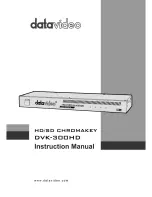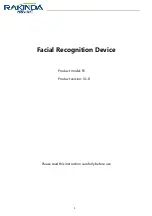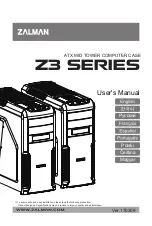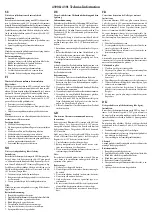
65
Only rescuers using a transceiver with a W-Link
radio connection are able to receive vital data.
The range of the W-Link depends on terrain and
body interference, on the physical characteristics of
the avalanche debris as well as on the orientation
and distance to the buried subject.
The range of
the W-Link is therefore limited.
9.4.3 Burial and Vital Duration
In case of a burial, the transceiver records the bur-
ial duration and detects vital data.
The Barryvox automatically displays the burial dura-
tion as soon as the transceiver stops being moved.
The burial duration is displayed in hours and minutes
along with the time during which vital data was
detected. The display of the burial duration is also
activated, if the Barryvox stops moving outside of an
avalanche.
By pressing any key in the SEND mode, you can
recall the burial data of the five last resting periods
of the transceiver. The resting periods are num-
bered:
-1
most recent resting period
-2
second last resting period
-3
third last resting period
-4
fourth last resting period
-5
oldest resting phase
The current resting phase is not numbered.
In multiple burial situations, the transceiver of a
rescued subject should be turned off as soon as pos-
sible.
64
C o m p a n i o n R e s c u e
9.4 Triage Criteria and Vital Data
9.4.1 Triage
With limited resources (few rescuers) it is not possi-
ble to locate and dig out all the buried subjects at
the same time. The question arises in which order
the buried subjects shall be rescued.
Subjects with
higher chances of survival should be located and
dug out first.
Besides simple terrain factors, e.g.
drop over a cliff, in seracs or crevasses, collision
with trees etc., the burial depth and vital data are
important triage criteria.
9.4.2 Vital Data Detection
The PULSE Barryvox
®
contains highly sensitive
sensors (g-sensor) that can detect slight motion of
the body, such as a pumping heart or breathing
lungs. Any motion within a certain maximum lag
time is interpreted as vital data. The buried subject
belongs to the category
with high chances of
survival. It can be assumed that buried subjects,
which have survived the first 35 min, are still able
to breathe (air pocket), and therefore have
increased chances of survival. At the same time, the
detectability of vital data decreases due to
hypothermia. Therefore, buried subjects who have
transmitted vital data for the first 35 min are con-
sidered to belong to the category
with high
chances of survival for the rest of their burial dura-
tion.
All the buried subjects, whose transceivers are
technically not capable of detecting vital data or
cannot detect any for whatever reason, belong to
the category
with unknown chances of survival.
If you carry the transceiver in a trouser’s pock-
et, the detection of vital data is not possible due
to the almost non-existent movements.
The data are displayed on the buried subject’s
transceiver and also sent across the W-Link radio
connection to the transceivers of the rescuers.
Based on the list of buried subjects, the rescuer
decides in which order he or she will locate and dig
them out. Using vital data as a triage criteria short-
ens the burial duration for those subjects having
higher chances of survival. This improves the
overall rescue efficiency.
The vital data do not provide an assessment of
the health of the buried subject. They do not
substitute an assessment by medically trained
personnel (physician).
Burial duration: 25 min
Vital data:
entire burial duration
Burial duration: 47 min
Vital data: first 22 min






































